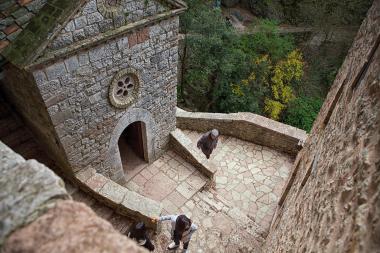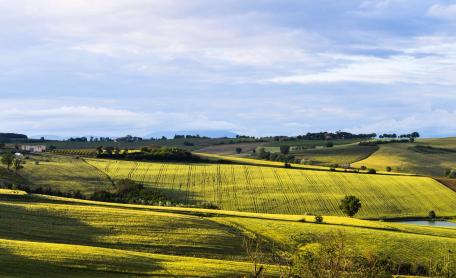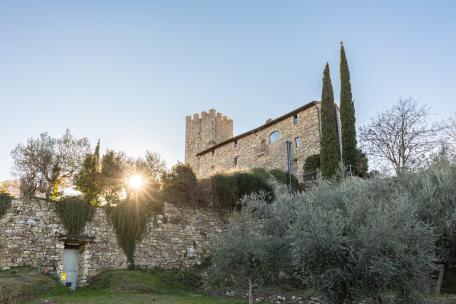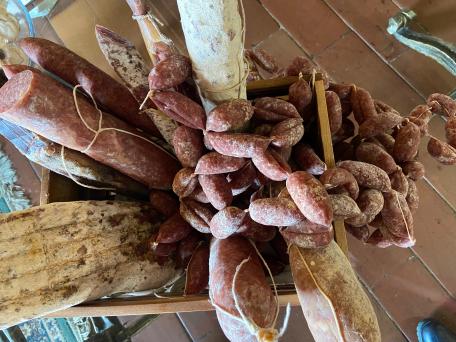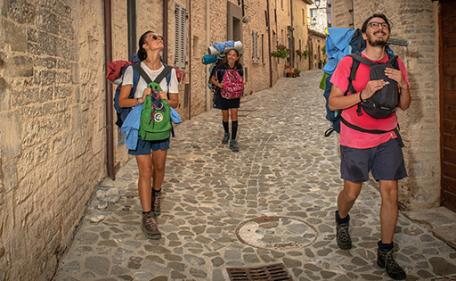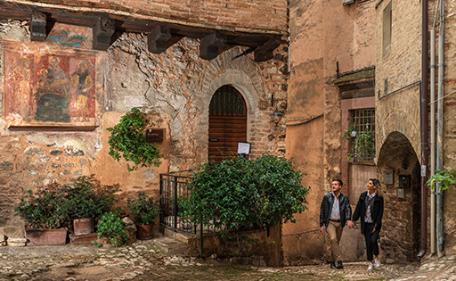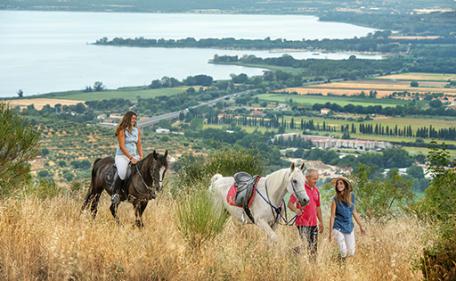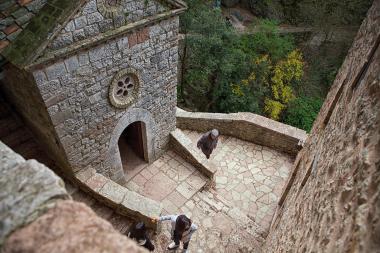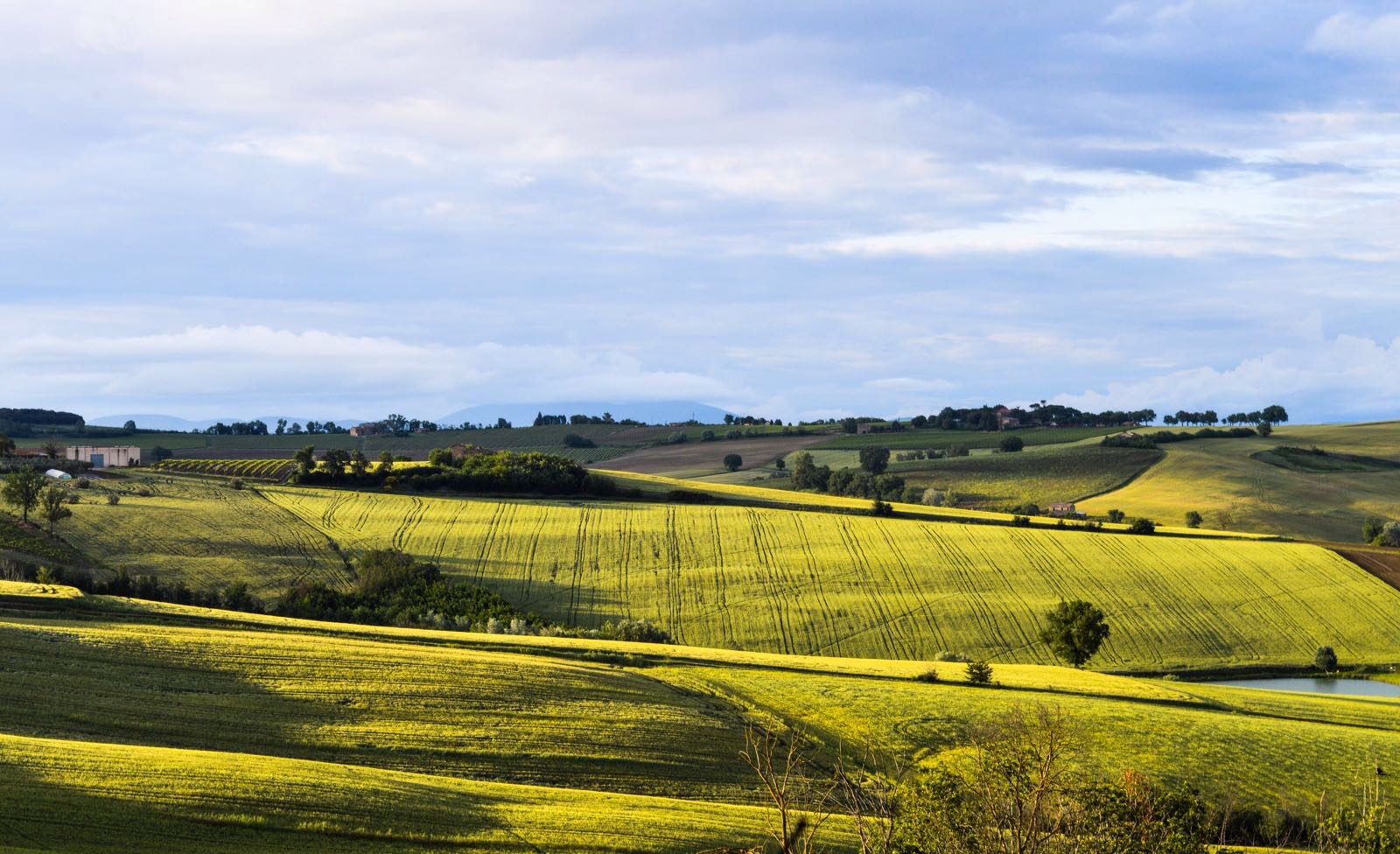STORIA
La presenza dell'uomo, confermata dai ritrovamenti di reperti conservati nel Museo Vulcanologico, risale al Paleolitico, al Neolitico e all'età del bronzo e del ferro. La città ebbe un ruolo di avamposto collinare in epoca Etrusca, la sua posizione consentiva infatti il controllo del traffico di olio, vino, armi e terrecotte da Orvieto (l’antica Velzna) verso il versante del perugino e del Trasimeno. Nella seconda metà del primo secolo d. c., il percorso venne a far parte del Corridoio Bizantino. Le origini dell'abitato di San Venanzo risalgono all'epoca bizantina, intorno all'VIII secolo.
Nel Medioevo il castello di San Venanzo, così come altri castelli della zona, fu perennemente conteso fra le rivali dominazioni di Orvieto, Marsciano, Perugia e Todi. Nel 1437 il Castello, mentre era ancora un feudo dei Monaldeschi, dopo l’ennesimo rifiuto di adempiere ai propri doveri fiscali, venne totalmente distrutto. Ricostruito rafforzò la propria economia estendendo la coltivazione dei terreni agricoli e verso la fine del XV° secolo, con la promulgazione di Statuti, fu nominato un Visconte dal Comune di Orvieto, convinto sostenitore della Stato Pontificio.
Nella prima metà del Settecento la Famiglia Faina, divenuti poi Conti, irrompe nella vita del Castello di San Venanzo apportando decisivi cambiamenti all’economia e al territorio. E’ alla famiglia Faina che si devono importanti innovazioni agricole (ad es. l’introduzione dei primi vigneti sperimentali), la fondazione della Facoltà di Agraria di Perugia e la diffusione sul territorio nazionale delle scuole agricole Faina.
ARTE, CULTURA, AMBIENTE
Da visitare, a San Venanzo, la grande Torre che domina il paese, resto del castello medievale, l'affresco della Madonna Liberatrice (sec. XIV) che si trova nell'omonima chiesa posta lungo la strada statale e la storica villa Faina. Interessanti sono anche i primi resti della chiesa di San Venanzio ben visibile nel parco pubblico.
La ricchezza del borgo è però data dal suo ambiente naturale incontaminato, tra i più suggestivi della regione. Di grande interesse naturalistico il Parco dei Sette Frati, situato in prossimità della cima del monte Peglia: l'area verde ospita una riserva faunistica protetta e il Centro di documentazione flora e fauna del Monte Peglia.
In questa zona, 265mila anni fa, era attivo uno dei 3 vulcani ‘bonsai' identificati da studi recenti, che hanno permesso di sviluppare anche il filone del turismo didattico-ambientale con l'apertura del Parco e Museo Vulcanologico. Il Museo, attivo dal 1999, è un punto di riferimento per studenti e studiosi che vogliono conoscere in modo approfondito le rocce ignee, il metamorfismo e le forme del vulcanismo. Perla del Museo è la venanzite (da cui molti fanno derivare l'origine del nome della città), roccia vulcanica unica al mondo nel suo genere che può essere osservata in loco in un'antica cava, che è il fulcro del Parco Vulcanologico, vero e proprio museo all'aria aperta.
L'interesse didattico-scientifico del territorio è testimoniato anche dai reperti rinvenuti durante gli scavi archeologici a Poggio delle Civitelle. Il materiale ritrovato conferma la presenza degli Etruschi e avvalora l'ipotesi che Poggio delle Civitelle fosse un avamposto difensivo per Orvieto, con all'interno una fabbrica di armi, vista la grande quantità di materiale ferroso scoperta nel sito.
Nei dintorni il territorio è disseminato da una miriade di torri e castelli medievali diffusi nelle frazioni limitrofe.

